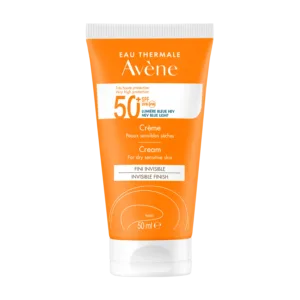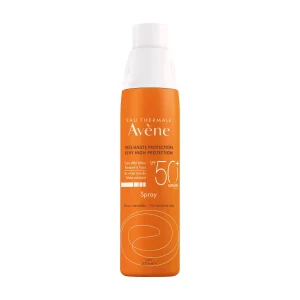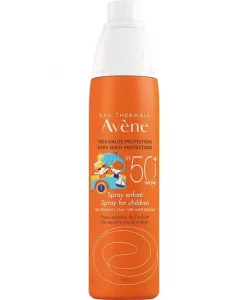
As the weather warms up and we spend more time outdoors, it’s important to remember the harmful effects of UV rays on your skin. But did you know that not all UV rays are created equal? In fact, different types of UV rays can affect your skin in different ways. By understanding these differences, you can better protect yourself from the harmful effects of sun exposure. In this article and in collaboration with the dermatologist Dr. Mona Alyabdelghaffar, we’ll take a closer look at the different types of UV rays and their effects on your skin, so you can make informed decisions about how to keep your skin healthy and safe in the sun.
What are the types of UV rays?
According to Dr. Mona Alyabdelghaffar, UV rays, or ultraviolet rays, are a type of electromagnetic radiation from the sun. They have a shorter wavelength and higher energy than visible light and can be divided into three categories based on their wavelength: UVA, UVB, and UVC. UVC rays are absorbed by the earth’s atmosphere and do not reach the surface, so most of the UV radiation people are exposed to is UVA and UVB.
- UVA Rays
UVA rays are longer wavelength rays that penetrate deep into your skin. Unlike UVB rays, UVA rays can penetrate clouds and glass, so you can still be exposed to them even when you’re indoors or in the shade. UVA rays are also present year-round, regardless of the weather, so it’s important to protect yourself from them at all times.
One of the most significant effects of UVA rays on your skin is premature aging. UVA rays can break down collagen and elastin fibers in the skin, leading to wrinkles, fine lines, and sagging skin. UVA rays can also cause hyperpigmentation, or dark spots, on your skin.
But perhaps the most concerning effect of UVA rays is their role in the development of skin cancer. UVA rays can penetrate deep into the skin, damaging cells and DNA. Over time, this damage can lead to mutations that cause cancerous cells to form.
- UVB Rays
UVB rays are shorter wavelength rays that primarily affect the top layer of your skin. Unlike UVA rays, UVB rays can’t penetrate glass, so you’re only exposed to them when you’re outside in direct sunlight. UVB rays are also more prevalent during the summer months when the sun is stronger.
One of the most immediate effects of UVB rays on your skin is sunburn. UVB rays can cause redness, swelling, and pain on the skin, and in severe cases, can even cause blisters. But beyond the short-term effects of sunburn, UVB rays can also cause long-term damage to your skin. UVB rays can cause skin cells to mutate, leading to the development of skin cancer.
What are the effects of UV rays on your skin?
Dr. Mona Alyabdelghaffar indicates that UV rays can have harmful effects on the skin, both in the short and long term. In the short term, exposure to UV radiation can cause sunburn. In the long term, repeated exposure to UV radiation can cause premature skin aging, such as wrinkles and age spots, and increase the risk of skin cancer.
- Sunburn: When the skin is exposed to UV rays, it can become red, swollen, and painful. This is known as sunburn and can range from mild to severe.
- Premature aging: UV rays can damage the collagen and elastin fibers in the skin, which can cause it to lose its elasticity and firmness. This can result in wrinkles, fine lines, and age spots. UVA rays can cause long-term damage to the collagen and elastin fibers of the skin, leading to premature aging
- Skin cancer: Exposure to UV radiation is a leading cause of skin cancer. This includes both non-melanoma skin cancers (such as basal cell carcinoma and squamous cell carcinoma) and melanoma, which is the most deadly form of skin cancer.
- Eye damage: UV rays can also damage your eyes, leading to cataracts and other eye problems.
How to protect yourself from UV rays?
Now that you understand the different types of UV rays and their effects on the skin, it’s important to take steps to protect yourself from sun damage. Here are some tips for staying safe in the sun:
1- Wear sunscreen.
Sunscreen is one of the most important tools for protecting your skin from UV rays. Dr. Mona Alyabdelghaffar indicates that sunscreens work by absorbing or reflecting UV rays, preventing them from reaching the skin.
She recommends looking for a sunscreen that offers broad-spectrum protection against UVA and UVB rays. The American Academy of Dermatology recommends using sunscreen with an SPF (sun protection factor) of 30 or higher. It’s also important to apply sunscreen correctly, using enough to cover all exposed skin and reapplying every two hours or directly after swimming or sweating.
Our choice of sunscreens:
For oily and acne-prone skin:
Eau Thermale Avène Very High Protection Fluid SPF 50+
For dry skin:
Eau Thermale Avène Very High Protection Cream SPF50+
For the body:
Eau Thermale Avène High Sun Protection Spray SPF 50+
For children’s sensitive skin:
Eau Thermale Avène Spray for Children SPF 50+
2- Seek shade.
If possible, stay in the shade during the peak hours of sunlight, which are typically between 10 am and 4 pm. You can also create your own shade by wearing a hat or carrying an umbrella.
3- Cover up.
Wearing protective clothing can also help shield your skin from UV rays. Choose clothing made from tightly woven fabrics, and wear a long-sleeved shirt, pants, and a wide-brimmed hat to cover as much skin as possible.
4- Use sunglasses.
Don’t forget to protect your eyes from UV rays, too! Look for sunglasses that offer 100% UV protection to keep your eyes safe.
5- Check the UV index.
Before heading outside, check the UV index for your area. This scale, which ranges from 0 to 11+, measures the strength of UV radiation and can help you determine how much protection you’ll need.
6- Don’t forget about UVA rays.
Remember that UVA rays can penetrate glass and are present year-round, so it’s important to protect yourself from them at all times. Look for sunscreens that offer broad-spectrum protection, and consider wearing protective clothing even when you’re indoors or in the shade.
7- Be mindful of reflective surfaces.
Water, sand, snow, and other reflective surfaces can bounce UV rays back up onto your skin, increasing your exposure. Be extra cautious when near these surfaces, and consider using extra protection like a beach umbrella or a wide-brimmed hat.
Final thoughts
Understanding the effects of UV rays on your skin is an important step in protecting yourself from sun damage. By wearing sunscreen, seeking shade, covering up, and being mindful of UV exposure, you can enjoy the outdoors safely and avoid the long-term consequences of sun damage. Remember, protecting your skin is a year-round responsibility, so make sure to take care of yourself every day, no matter the weather.













